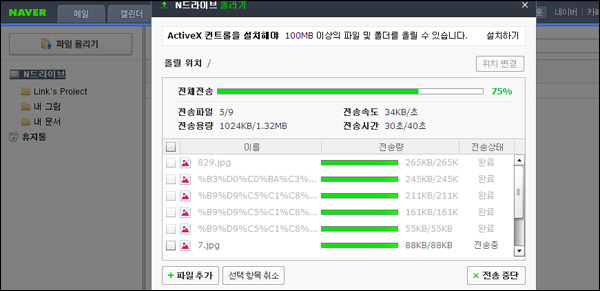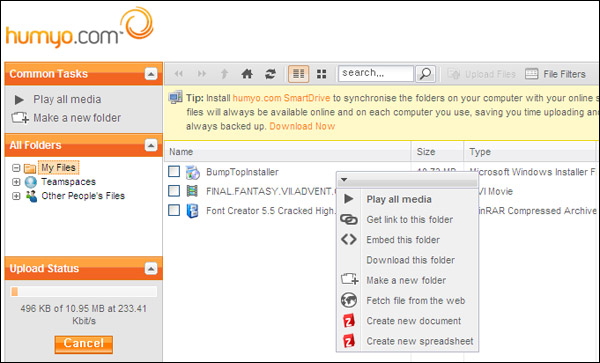※토시 하나 안 틀리고 가져 왔습니다. 저작권은 아래 링크의 블로거에게 있음을 알려 드립니다.
Important update, May 30, 2009: Microsoft have released an update
to .NET Framework 3.5 SP1 for the .NET Framework Assistant 1.0 for
Firefox, which addresses several compatibility issues with the Firefox
browser. In this update for .NET Framework 3.5 SP1 and in Windows 7,
the .NET Framework Assistant is installed on a per-user basis and as a
result, the Uninstall button
is functional in the Firefox Add-ons list. This makes .NET Assistant a
valid, fully uninstallable utility and therefore, the methods listed in
this article are no longer relevant or might not be needed. You may
also want to take a look at Microsoft's official manual removal guide. Thanks.
May I call this thing spyware? I think I can. Because spyware fits two clear definitions:
- Installs without explicit user consent.
- Cannot be uninstalled using its own uninstaller or via Add/Remove.
So, the story begins with a Microsoft .NET Framework 3.5 SP1 update (KB951847)
recently launched. In case you decide to download this update, either
automatically or manually, you will end up with a new Firefox extension
(if you're using this popular browser), which you have not asked for.
OK, no problem, uninstall it. Ah ...
I decided to test this quite worrying story and verify the results for
myself. And then, write an article / tutorial that explains how the
problem occurs and how you can solve it.
Statement of problem
Claims are as follows: Microsoft / Windows .NET Framework 3.5 SP1
update (KB951847) will install a new extension, specifically .NET
Framework Assistant 1.0, to your Firefox browser, if you have it
installed, without user consent. Furthermore, to make things worse,
this extension cannot be uninstalled.
Is this true?
Let's see ...
Test case - install .NET 3.5 framework
I went to the Microsoft website and downloaded the package. Double-clicked to install.
The installation begins. I used System Safety Monitor (SSM) to monitor
all system and registry changes that .NET 3.5 installation makes to see
whether I'll see anything suspicious, especially related to Firefox.
The installation seems to proceed well, except the constant alerts from
SSM, informing of numerous registry changes. So far, there's nothing
major happening.
A thousand SSM alerts later, the installation is complete. I fired up
Firefox to see whether new extensions have been added. Nope.
But this does not conclude my case. We now have to perform a Windows
Update and see whether the latest patch causes any issues.
Windows Update
Indeed, there's a high-priority update (first on the list) for .NET
Framework, our beloved KB951847. It has been automatically selected and
would have been automatically offered had I been using automatic
updates.
Nothing mentions Firefox in any way.
Furthermore, if you check the KB951847 page, it lists the changes
introduced in the Service Pack, but nowhere does it mention Firefox,
either.
The download is a whooping 250MB, which raises a
question whether you should be using this in the first pace. But let's
proceed.
After an age of prompts, the installation is complete. I did not notice
any prompt from SSM telling me of any change about to happen with
Mozilla Firefox, but I could have easily missed it in the torrent of
changes. Well, following a restart, I check my Firefox browser and:
Microsoft .NET Framework Assistant 1.0 has been installed
Notice that the Uninstall button is grayed out. I was not asked to
approve or even confirm this installation. There is no mention that
this thing was going to be installed, neither on the Microsoft pages or
during the installation itself. And now, it seems, it cannot be
removed.
Spyware, anyone?
How to remove Microsoft .NET Framework Assistant 1.0 spyware
Luckily, this thing can be removed, rather easily.
Solution 1: Simply delete a few files
This is relatively easy and takes only about 2 minutes. There's no need
to be specially savvy about computers. Anyone can do this.
First, close Firefox.
Now, navigate to the following folder:
C:\WINDOWS\Microsoft.NET\Framework\v3.5\
Windows Presentation Foundation\DotNetAssistantExtension
Like this:
Move, rename or delete the files inside this folder. If you want to
retain some sort of a backup, then zip or rar the files away. You can
also delete them or rename them. But make sure once your job is done to
leave this folder empty.
Start Firefox. The spyware should be gone.
Optional:
The next step is to clear away the user agent the .NET Assistant leaves
behind. If you don't know what a user agent is or how to use the
Firefox configuration tab called about:config, you can skip this step.
In Firefox, in the address tab, type about:config and hit Enter. This
will take you to a Firefox configuration page, where you can control
different aspects of behavior of your browser. The use of this page
should only be done by skilled users.
Search for the following string: general.useragent. One of the results that will come up will be general.useragent.extra.microsoftdotnet. We want to reset this string.
Simply right-click it and choose Reset. Like this:

Job done.
I would like to thank chrisretusn for this solution. It's simple, fast and elegant.
Solution 2: Registry hack
If you are skilled enough to edit the registry, then you can try this
method, too. Again, first close Firefox. Then, open the registry editor
(regedit):
Start > Run > regedit.exe
Now, navigate to:
HKEY_LOCAL_MACHINE\SOFTWARE\Mozilla\Firefox\Extensions
Here, you will find an entry named {20a82645-...}.
Under the Data column in the right pane, you can see and verify that it
belongs to Microsoft .NET 3.5. Now, simply right-click this entry and
delete it. If you want, export the key first as a sort of backup.
Job done.
Conclusion
I like Microsoft products overall, but I cannot and will never condone
blatant misuse of corporate power to distribute useless, unasked-for
software to masses who do not have the skills to tell part good from
bad or how to handle issues like the above.
The
Assistant, if at all, should be an optional package, with clear user
consent granted before any installation. Furthermore, the installation
should be fully 100% revocable, so that anyone using the computer can
do it, via the standard Add/Remove panel.
This is a very
serious breach of user trust. Not only is this package delivered
without explicit approval, it's also made difficult to remove.
Moreover, its use is not clear. Lastly, the change affects third-party
software, not one of Microsoft products, so the question is, what the
hell did Microsoft want to achieve with this nebulous, spyware-like
update? Animosity from a few trusted users? Force people not to install
updates or use older versions of their products?
Anyhow,
I leave big questions to big people. If you want this thing off your
computer, then you have two rather fast and simple methods. Enjoy. And
tell your Firefox friends.
Cheers.
출처 : http://www.dedoimedo.com/computers/ms-dotnet-firefox.html
-------------------------------------------------------------
참고1 : http://choboweb.com/795
참고2 : http://bloter.net/archives/14007
어느날 출근해보니 컴퓨터에 떡하니.
근데 지멋대로 깔아놓고는 호환도 안된단다. 개그도 이런 개그가 없음.
위에서 언급한 대로
May I call this thing spyware? I think I can. Because spyware fits two clear definitions:
- Installs without explicit user consent.
- Cannot be uninstalled using its own uninstaller or via Add/Remove.
알
지도 못하는 사이에 삭제도 안되게 깔려있는 멋진 스파이웨어. 윈도우를 사용하는 사용자들, 그렇지만 익플을 안쓰고 파폭을
사용하는 사용자들에게 마소가 친 장난이라고 하기엔 좀 기분이 나쁘다. 뭐, 사용자의 편의를 위한거라고는 하지만 삭제도 안되게
하는건 엄연히 사용자의 선택권 침해라는 생각이 새록새록 드는 건 별 수 없는 것일까. 결국 업데이트란 미명 아래 진짜(!)
스파이웨어를 배포한다고 해도(물론 그럴일은 '절대' 없겠지만) 결국 모르고 지나간다는 거니 말이다. 더불어 과연
마이크로소프트가 이렇게 멋대로 파이어폭스를 건드려도 되는가에 대한 의문도.
사실 위의 기사(참고2) 볼 때까지만 해도 그냥 그러려니 했는데, 당하고보니 제법 상큼한 기분이라 주저리주저리.


 ieung303.exe
ieung303.exe


















